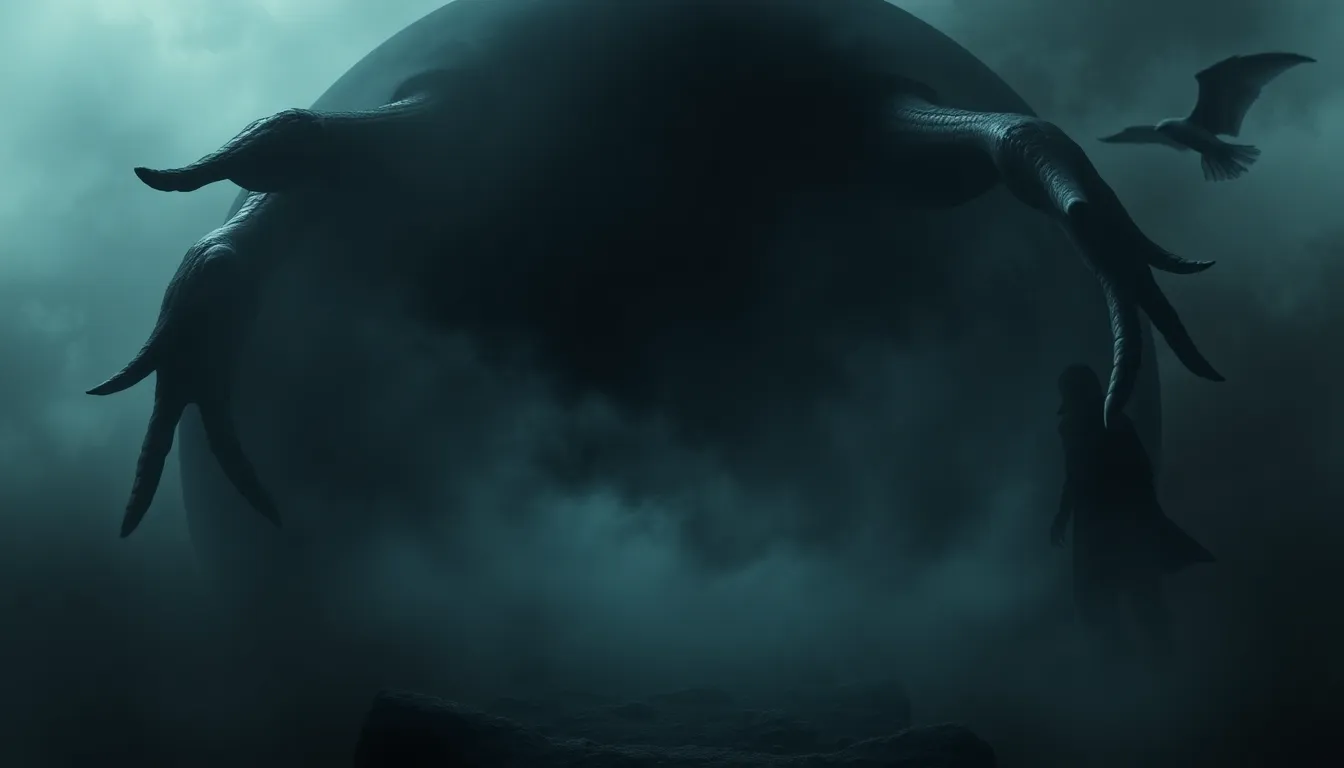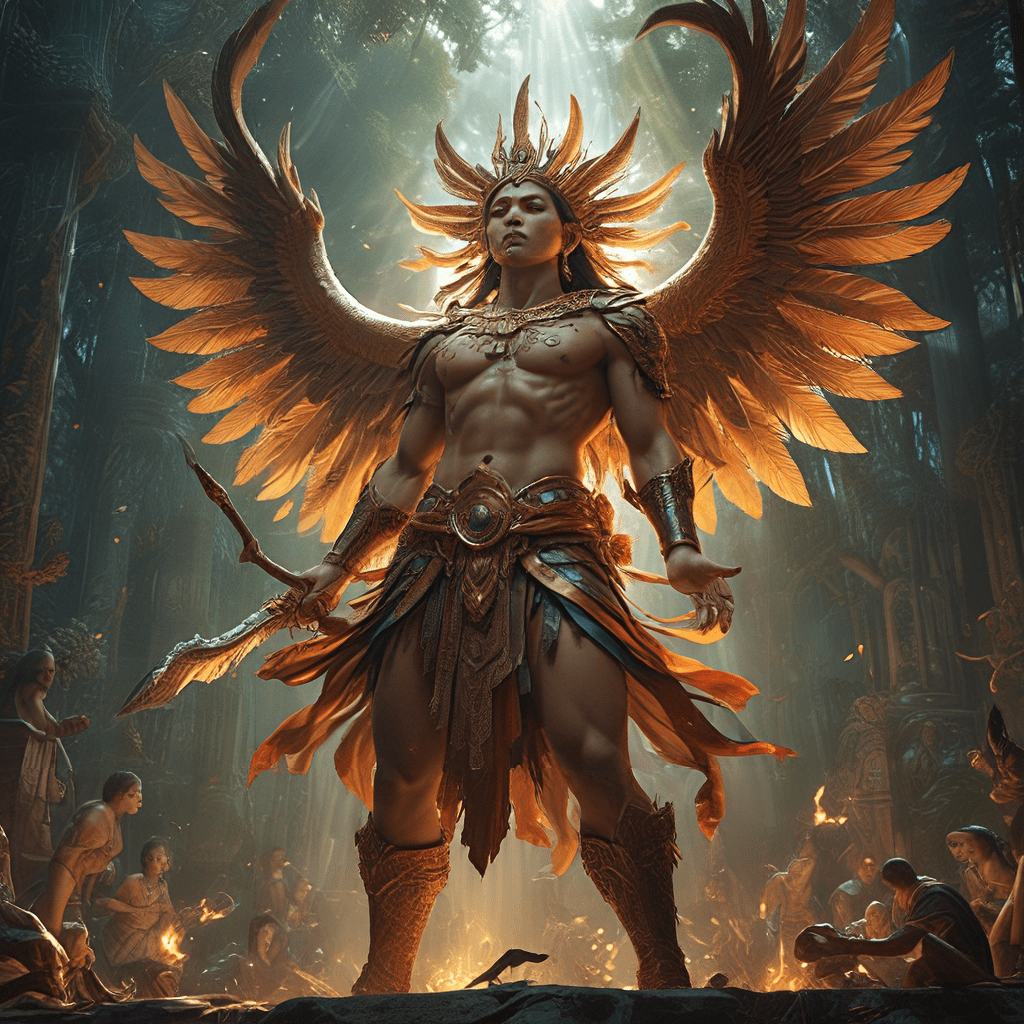Exploring the Divine Beings in Persian Mythology
1. Ahura Mazda: The Wise Lord and Supreme Deity
Ahura Mazda, also known as Ohrmazd, reigns supreme in the Persian pantheon. This benevolent deity embodies wisdom, light, and creation. He is the source of all goodness and truth, constantly battling against the forces of darkness and evil. Ahura Mazda is depicted as a wise and majestic figure, often accompanied by the symbol of a winged disk representing his omnipresence. He is the ultimate source of moral guidance and inspiration for humanity, guiding believers towards righteousness and understanding.
2. The Amesha Spentas: The Seven Bounteous Immortals
The Amesha Spentas are seven divine entities closely associated with Ahura Mazda. These benevolent immortals represent abstract concepts like good thoughts, truth, order, and devotion. Each holds a specific responsibility related to the well-being and prosperity of the world. Their names and associated virtues include:
- Vohu Manah: Good Mind, representing good purpose and thought.
- Asha Vahishta: Best Truth, symbolizing righteousness and order.
- Khshathra Vairya: Desirable Dominion, representing rightful rulership and power.
- Spenta Armaiti: Holy Piety, embodying devotion and loyalty.
- Haurvatat: Wholeness, representing physical and spiritual health.
- Ameretat: Immortality, symbolizing eternal life and renewal.
- Sraosha: Obedience, representing obedience to divine law and order.
3. Mithra: God of Light, Contracts, and Justice
Mithra, the sun god, embodies light, justice, and oaths. He is a protector of truth and punishes those who break their promises. Mithra's cult gained immense popularity across the ancient world, especially among Roman soldiers. He is often depicted as a young man slaying a bull, symbolizing his victory over evil and darkness.
4. Anahita: Goddess of Waters, Fertility, and Healing
Anahita, the goddess of waters, fertility, and healing, grants abundance and prosperity to her followers. She is associated with life-giving waters, fertility, and the power to heal. Depicted as a beautiful woman holding a water vessel, Anahita is revered for her nurturing and protective nature.
5. Zoroastrianism and its Influence on the Divine Beings
Zoroastrianism, founded by the prophet Zoroaster, significantly shaped the development of Persian mythology. This ancient religion emphasizes the eternal struggle between good and evil, with Ahura Mazda representing the forces of light and Angra Mainyu (Ahriman) representing the forces of darkness. The Amesha Spentas, Mithra, and Anahita are among the many divine beings who play crucial roles in this cosmic battle.
6. Yazatas: Lesser Deities and Angelic Beings
The Yazatas are a group of lesser deities and angelic beings who serve as intermediaries between Ahura Mazda and humanity. They are often associated with specific aspects of nature, such as fire, water, and wind. Some prominent Yazatas include:
- Verethragna: God of victory and war.
- Tishtrya: God of rain and fertility.
- Geush Urvan: Spirit of the Earth and all animals.
- Mithra: As described above, Mithra is also considered a Yazata.
The Yazatas play a vital role in maintaining the balance between good and evil in the world. They act as messengers and protectors, aiding those who strive to follow the path of righteousness.
7. Fravashi: Guardian Spirits and Ancestors
Fravashi are the guardian spirits of individuals and their ancestors. They are believed to be pre-existent spiritual entities that choose to incarnate in the material world. Each person's Fravashi guides and protects them throughout their life, ensuring they fulfill their destiny. Fravashis are also seen as intermediaries between the physical and spiritual realms, carrying prayers and offerings to the divine beings.
8. Daeva: The Evil Spirits and Enemies of Ahura Mazda
Daevas are the evil spirits who oppose Ahura Mazda and the forces of good. They embody darkness, chaos, and destruction. The most prominent Daevas include:
- Angra Mainyu (Ahriman): The destructive spirit and lord of darkness.
- Aka Manah: Evil Mind, representing evil thoughts and intentions.
- Indra: Demon of war and violence.
- Saurva: Demon of disease and death.
The Daeva constantly tempt humans towards evil and try to disrupt the harmony of the world. However, their power is ultimately limited, and they will ultimately be defeated by Ahura Mazda in the final battle between good and evil.
9. Ahriman: The Destructive Spirit and Lord of Darkness
Ahriman, also known as Angra Mainyu, is the embodiment of evil and the antithesis of Ahura Mazda. He is the source of all darkness, lies, and suffering in the world. Ahriman constantly strives to undermine Ahura Mazda's creation and lead humanity astray. He is depicted as a monstrous serpent or dragon, symbolizing his destructive nature.
10. The Duality of Good and Evil in Persian Mythology
The central theme of Persian mythology is the ongoing struggle between good and evil, represented by Ahura Mazda and Ahriman. This duality permeates all aspects of the mythology, from the creation of the world to the lives of individual human beings. The choice between good and evil is presented as a fundamental aspect of human existence, and individuals are ultimately responsible for their own choices and actions.
FAQ
What are the main sources of information about Persian mythology?
The primary sources of information about Persian mythology include the Avesta, the sacred texts of Zoroastrianism, and various other literary works from the ancient and medieval periods. These include the Shahnameh, a 10th-century epic poem by Ferdowsi, and the works of the Greek writers Herodotus and Plutarch.
What is the significance of fire in Persian mythology?
Fire is a sacred element in Persian mythology, representing purity, light, and wisdom. It is associated with Ahura Mazda and the Yazatas, and is used in religious ceremonies and rituals. Fire temples were important centers of worship in ancient Persia, and the tending of sacred fires was considered a sacred duty.
How has Persian mythology influenced other cultures?
Persian mythology has had a significant influence on other cultures, particularly those in the Middle East and Central Asia. Elements of Persian mythology can be found in the mythologies of other Indo-European cultures, such as those of the Greeks and Romans. Additionally, Persian mythology has played a role in the development of Islamic mysticism and Sufism.



